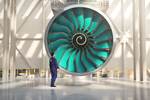Clean Aviation 2021 Highlights Report builds momentum for climate-neutral aviation
Latest progress, participants and synergies for the MFFD, UltraFan engine, RACER helicopter, Next-Gen Civil Tilt Rotor and other projects under the Clean Sky 2 Joint Undertaking are highlighted.
Photo Credit: Clean Aviation
’s (formerly Clean Sky 2, Brussels, Belgium) put on a two-day forum, “,” from March 22-23, 2022, to discuss its current research and the ambitions of the new Clean Aviation Joint Undertaking, as well as to paint picture of how the future of aviation will look as the industry seeks to achieve climate neutrality by 2050. The event brought together European industry leaders, research centers, SMEs and universities, as well as representatives of the European Commission, the Parliament and the Member States.
Clean Aviation was launched in Dec. 2021 alongside eight other public-private partnerships in order to bring together public and private resources to support innovations and research for the EU. More importantly, Clean Aviation will develop and demonstrate technologies which will reduce greenhouse emissions by at least 30% versus current state-of-the-art regional and short-medium range aircraft with a targeted entry-into-service in 2035.
Find Clean Aviation’s new , which documents a selection of 2021 achievements made by Clean Sky and Clean Aviation, including innovative technologies, those who are participating, synergies and other EU, national and regional initiatives, and the path forward for Clean Aviation.
Related Content
-
Welding is not bonding
Discussion of the issues in our understanding of thermoplastic composite welded structures and certification of the latest materials and welding technologies for future airframes.
-
Development of a composite liquid hydrogen tank for commercial aircraft
Netherlands consortium advances cryogenic composites testing, tank designs and manufacturing including AFP, hybrid winding, welding of tank components and integrated SHM and H2 sensors for demonstrators in 2025.
-
Plant tour: Collins Aerospace, Riverside, Calif., U.S. and Almere, Netherlands
Composite Tier 1’s long history, acquisition of stamped parts pioneer Dutch Thermoplastic Components, advances roadmap for growth in thermoplastic composite parts.



